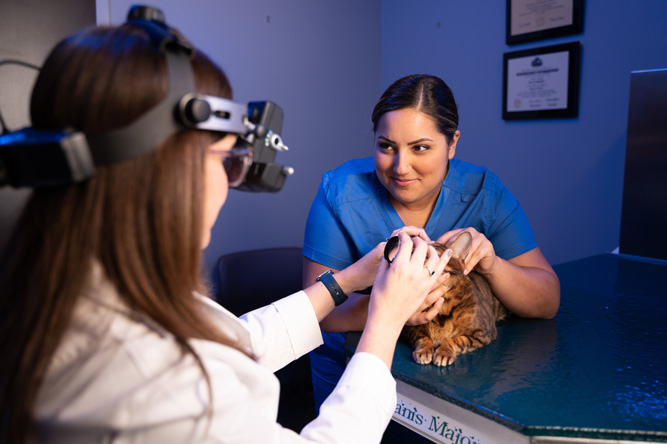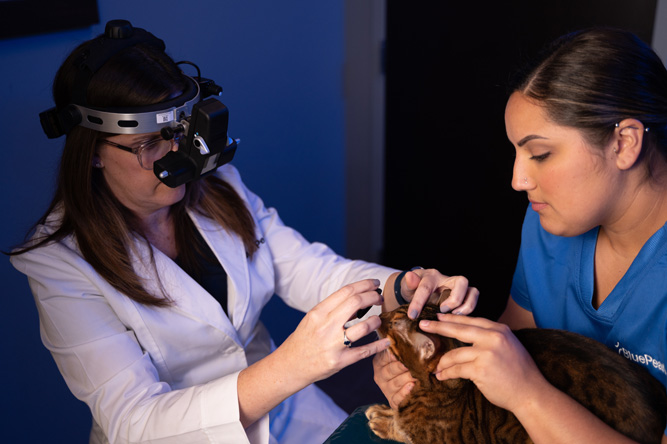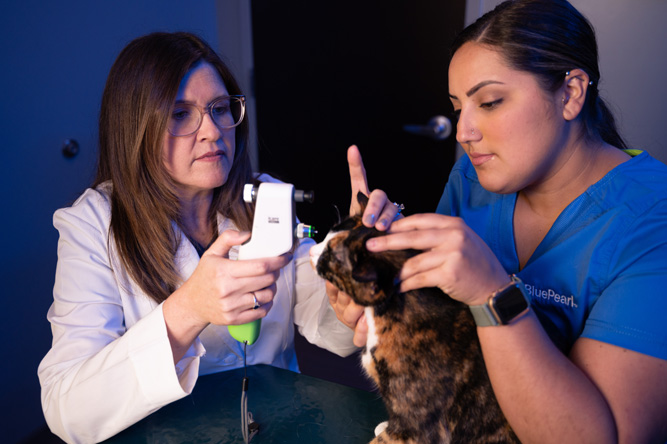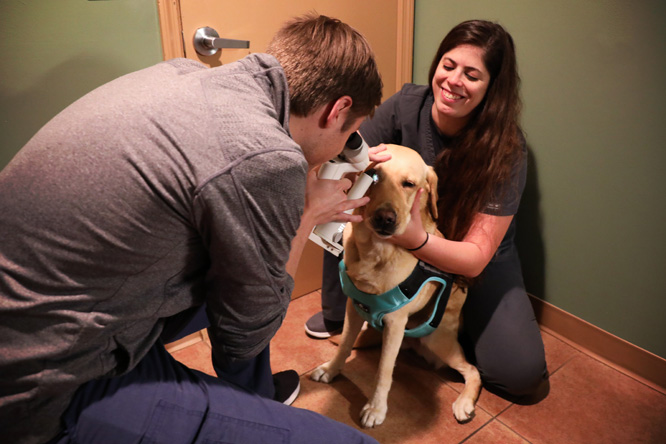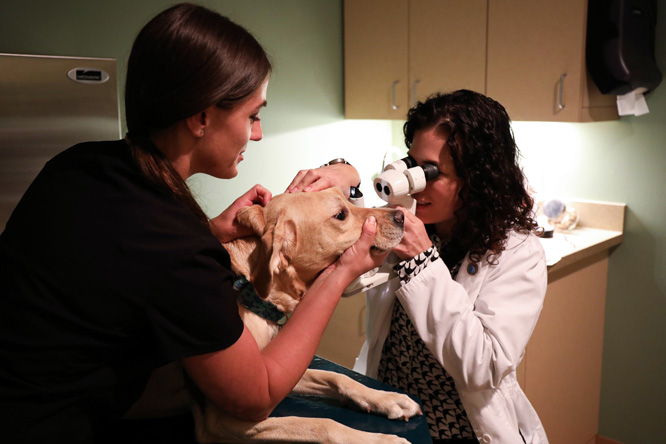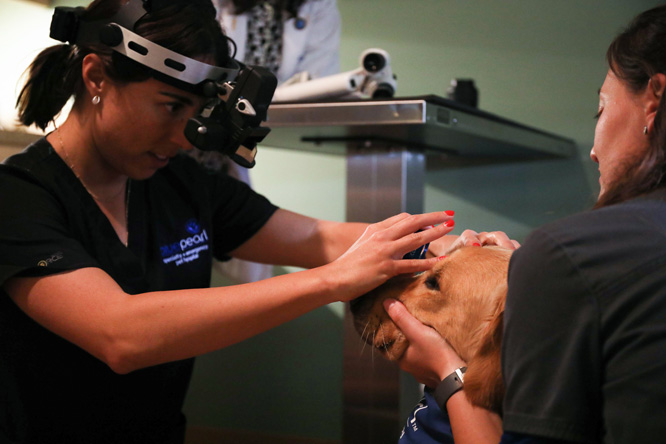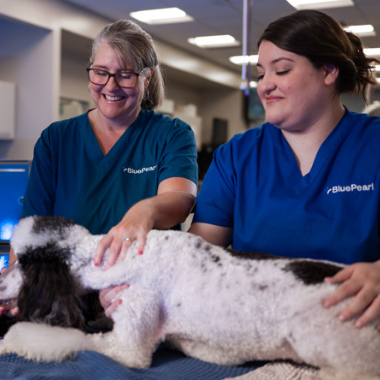Pet ophthalmology by BluePearl.
Advanced vision and eye care to help your pet live a better, more comfortable life.
We understand that seeing your pet experience unusual symptoms or act out of the ordinary can be stressful – especially if you don’t know what’s wrong. Fortunately, our veterinary ophthalmology team is made up of experts in diagnosing and treating diseases of the eye, and we’re here to help.
Our commitment is not just to treat illnesses; it’s to enhance the well-being of your pet and be with you every step of the way.
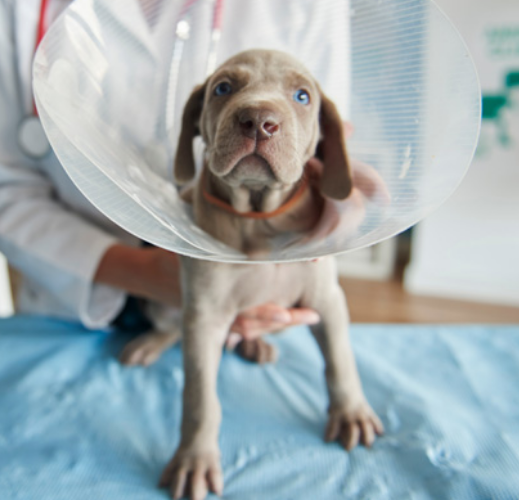
Conditions we treat.
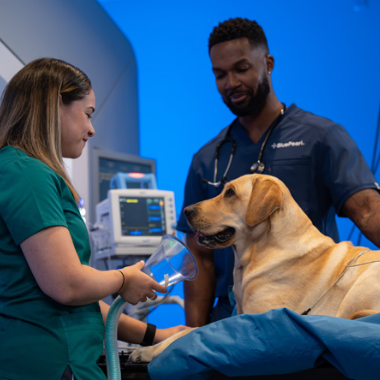
If your pet has an eye condition, you’ll have an entire ophthalmology team helping to improve your pet’s quality of life so you can get back to what matters most – spending precious moments together.
- Cataracts
- Cornea injuries
- Retinal disease
- Dry eye
- Eyelid and eyelash injuries or abnormalities
- Glaucoma
- Inflammation and conjunctivitis
- Third eyelid, or cherry eye
Services we offer.
Your pet will receive unparalleled medical care during their time at the hospital (and they’ll be spoiled with love and attention, too).
Advanced diagnostics
Your pet can’t tell us what’s wrong, so we use sophisticated diagnostics and imaging tools to uncover the source of the problem.
- Electroretinography
- Fluorescein stain
- Indirect ophthalmoscopy
- Tear testing
- Tonometry
- Gonioscopy
- Ocular and orbital imaging
- Slit-lamp exams
Treatment plans
Just as no two patients are the same, neither are their treatment plans. Our ophthalmology team has experience with a range of advanced procedures and minimally invasive care options to get your pet on the path to wellness, including:
- Cataract surgery
- Cherry eye repair
- Glaucoma surgery
- Orbital surgery
- Reconstructive surgery
- Dry eye therapy
Our board certified specialists and ophthalmology team.
Experience makes all the difference.
Our ophthalmology team is made up of veterinarians, vet technicians and assistants, and support staff with rigorous training and experienced in specialty medicine. The team works hand in hand to provide the comprehensive, compassionate care your pet needs and deserves. Because we’re a multidisciplinary hospital, the team can consult the expertise of other specialty departments, too.
Martha Low
DVM, DACVOWhether she’s performing cataract surgery on a senior pet, repairing a cherry eye in a puppy or developing a treatment plan for a cat with feline ocular herpes, Dr. Martha Low brings her compassion and dedication to provide premier care for pets of all kinds.
Dr. Low has cared for many cats and dogs, but some of her most memorable cases are of a slightly more exotic species. Her team recently examined a rescue owl for cataracts and once removed a cataract from a Bobcat living at Lakota Wolf Preserve. When Dr. Low visited the preserve years later, the team there said that the Bobcat, Santa Claws, lived the remainder of her days with her vision intact, and it vastly improved her quality of life.
When asked what the most rewarding part of her job is, Dr. Low said, “Being able to restore vision in pets that were blind. This usually happens after cataract surgery but can happen with other ocular diseases as well. It’s an amazing feeling to see a previously scared or nervous, blind dog leave after cataract surgery bouncing around and so happy to see their owners.”
- Diplomate, American College of Veterinary Ophthalmologists
- Residency, Ophthalmology, Center for Animal Referral and Emergency Services, Langhorne, PA
- Internship, Small Animal Medicine & Surgery, Center for Animal Referral and Emergency Services, Langhorne, PA
- Doctor of Veterinary Medicine, University of Illinois, Champaign-Urbana
- Bachelor of Arts, Columbia University, New York, NY
What to expect.
We want you to be prepared for your pet’s visit to the ophthalmologist, so you have one less thing to worry about. Our entire BluePearl team will be with you every step of the way.
Before your visit
- Make an initial appointment by calling us directly or via referral from your pet’s primary vet.
- We’ll get records from your primary or emergency vet before your first visit and collaborate with them to discuss your pet’s history and current condition.
During your visit
- When possible, we’ll examine your pet with you by their side to make them more comfortable. If additional tests are needed for a diagnosis, we’ll discuss those options with you.
- You’ll have plenty of time and opportunity to ask questions as we go over your pet’s diagnosis together.
- Before you leave, you’ll receive a detailed treatment plan, discharge instructions and any recommended medications. We’ll schedule a recheck appointment and make sure you’re aware of any symptoms you should watch out for at home.
After your visit
- Our team will continue to partner with your primary veterinarian as part of the ongoing management of your pet’s care.
- You know your pet better than anyone, and you play a crucial role in their treatment plan. If you have any concerns about providing care at home (such as giving medication, maintaining a specific diet or monitoring your pet’s symptoms), let us know – we’re here for you.
